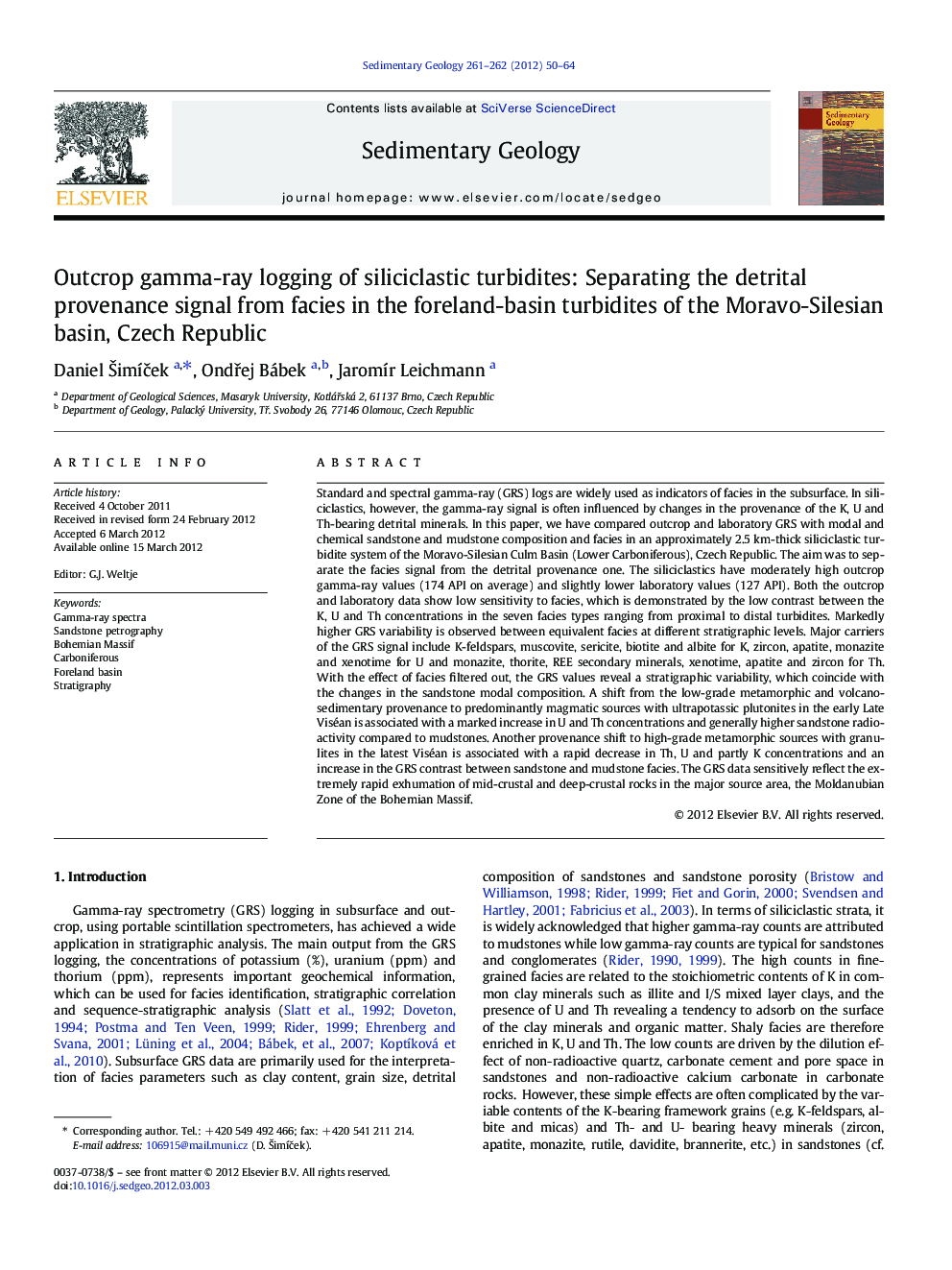| کد مقاله | کد نشریه | سال انتشار | مقاله انگلیسی | نسخه تمام متن |
|---|---|---|---|---|
| 4689820 | 1636091 | 2012 | 15 صفحه PDF | دانلود رایگان |

Standard and spectral gamma-ray (GRS) logs are widely used as indicators of facies in the subsurface. In siliciclastics, however, the gamma-ray signal is often influenced by changes in the provenance of the K, U and Th-bearing detrital minerals. In this paper, we have compared outcrop and laboratory GRS with modal and chemical sandstone and mudstone composition and facies in an approximately 2.5 km-thick siliciclastic turbidite system of the Moravo-Silesian Culm Basin (Lower Carboniferous), Czech Republic. The aim was to separate the facies signal from the detrital provenance one. The siliciclastics have moderately high outcrop gamma-ray values (174 API on average) and slightly lower laboratory values (127 API). Both the outcrop and laboratory data show low sensitivity to facies, which is demonstrated by the low contrast between the K, U and Th concentrations in the seven facies types ranging from proximal to distal turbidites. Markedly higher GRS variability is observed between equivalent facies at different stratigraphic levels. Major carriers of the GRS signal include K-feldspars, muscovite, sericite, biotite and albite for K, zircon, apatite, monazite and xenotime for U and monazite, thorite, REE secondary minerals, xenotime, apatite and zircon for Th. With the effect of facies filtered out, the GRS values reveal a stratigraphic variability, which coincide with the changes in the sandstone modal composition. A shift from the low-grade metamorphic and volcano-sedimentary provenance to predominantly magmatic sources with ultrapotassic plutonites in the early Late Viséan is associated with a marked increase in U and Th concentrations and generally higher sandstone radioactivity compared to mudstones. Another provenance shift to high-grade metamorphic sources with granulites in the latest Viséan is associated with a rapid decrease in Th, U and partly K concentrations and an increase in the GRS contrast between sandstone and mudstone facies. The GRS data sensitively reflect the extremely rapid exhumation of mid-crustal and deep-crustal rocks in the major source area, the Moldanubian Zone of the Bohemian Massif.
► Outcrop and laboratory GRS data show low sensitivity to facies.
► The gamma-ray signal is influenced by changes in provenance of detrital minerals.
► GRS signal driven by facies can be separated from the detrital provenance one.
► Stratigraphic variation of GRS signal reflects provenance changes in source area.
Journal: Sedimentary Geology - Volumes 261–262, 15 June 2012, Pages 50–64